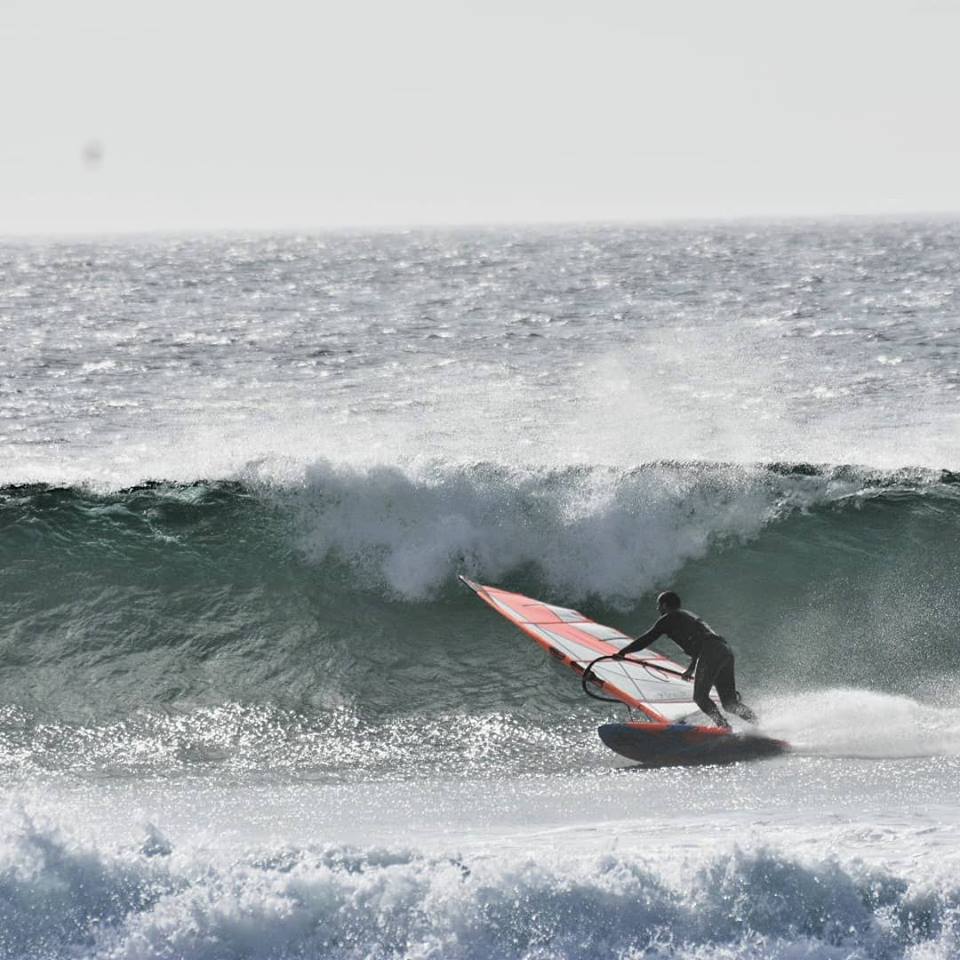It can be tricky to judge which size to choose when moving on to new kit. Board sizes are indicated in volume, fin sizes in cm (depth) and sail sizes in m². But is that correct? Not really and it’s not consistent either. Volumes and surfaces are hard to measure for correctness and we´ve seen quite a bit of variation between brands over the years, even if nowadays CAD programs will give the designer the correct figure. Rocker lines or foil depths are hardly ever given but at least can be measured. Widths, depths or luff lengths are nearly always given and can be measured easily for which they are usually pretty correct.
Besides that many more design details come into play for how early a board will plane (and how early a board will become overpowered) and the same for fins and sails.
The profile (rocker, fin thickness or sail depth) also matters a lot as well as plan shape. A flatter board will plane earlier as well as a thicker fin or deeper sail. This may seem contradictive but this is because a board only gets lift from one (less effective) side of its ‘foil’ and a fin or sail uses both sides, likewise a hydrofoil. What also matters is the foil shape spread out over the board, fin or sail. If a sail is deep in the foot but flat from the logo up it may not be as powerful as you think as down below there is less wind. Adding shape to the main body of the sail will move the centre of effort up but if you don´t get enough power from the main body of the sail you will need a bigger sail and what does that do to the centre of effort AND the centre of gravity? Both will move up and have a bigger negative effect on handling. The reason why we all like to use small sails if possible is because handling is important and comfortable when on smaller.
What about width vs length? Hydro and aerodynamics teach us it is more important the amount of water or air that gets in contact with the device than for how long. The greater the measurement, perpendicular to the direction we are travelling, the higher the lift we´ll get. So for a board this means the wider the earlier it planes, for fins and sails this means the longer the more lift and the earlier you plane. If you make a board thinner and wider it will plane earlier, even if it has less volume. This may be confusing, especially as ‘compact’ designs are the fashion but in fact has the opposite result between boards on one side and sails and fins on the other. A shorter and wider board planes earlier for the same volume but a short and wide sail will plane later for the same area, so you will need a bigger sail in area with a longer boom which also has a negative effect on handling and keeping the sail clear of the water/wave which then also reduces turning ability of the board as you can´t lean the sail as much.
Summary of the basics:
For a board there are three main things to judge: Always first look at the width, then rocker line (or board type), then volume.
For a sail: Luff length, then profile depth (and where) then sail area.
For a fin: depth, then thickness, then area.
Of course there is a LOT more to the above than what’s been mentioned. Please feel free to leave any questions, remarks or simply discuss this below. We’d love to hear feedback.
If you liked the above article then you might also want to try –
Windsurfing kit considerations – a few points to think about before making a purchase





